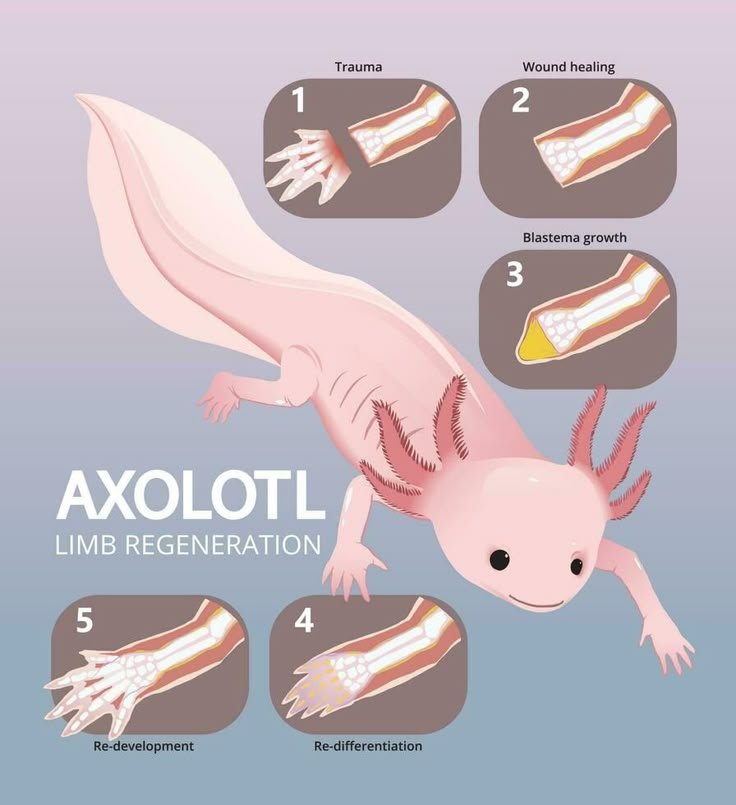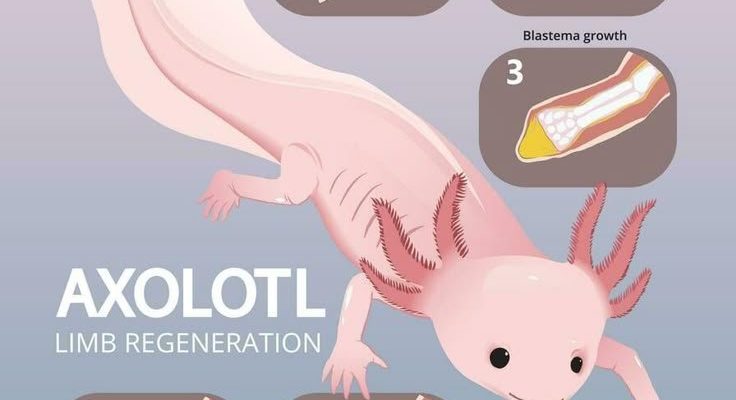
In this article, we’re going to dive deep into the world of axolotl regeneration. We’ll explore how these amazing amphibians can regrow their limbs and organs, the science behind it, and what it means for humans. So grab a coffee, get comfy, and let’s jump in!
What Are Axolotls?
Axolotls, scientifically known as *Ambystoma mexicanum*, are unique amphibians native to the lake complex of Xochimilco near Mexico City. They are best known for their cute, smiley faces and feathery gills that stick out from their heads like little pink fans. Unlike most amphibians, which undergo metamorphosis from tadpole to adult, axolotls remain in their juvenile state their whole lives, a condition known as neoteny.
These creatures come in various colors, including the typical wild type, leucistic (which is pale with pink hues), and golden albino. But beyond their adorable appearance, axolotls are celebrated for their exceptional regenerative abilities. They have puzzled and excited scientists for years!
Why Regeneration Matters
Regeneration is a biological miracle. It’s not just about regrowing limbs; it signifies a higher level of adaptability in a species. For axolotls, regeneration is crucial for survival; if they lose a limb to a predator, they can regrow it rather than being left vulnerable. This ability also offers researchers valuable insights into healing and tissue regeneration, which could someday lead to breakthroughs in human medicine.
Let’s face it, who wouldn’t want to recover from injuries or surgeries in such a remarkable way? The study of axolotl regeneration could potentially transform our understanding of healing, leading to treatments that enhance recovery or even promote regeneration in humans.
How Do Axolotls Regenerate Limbs?
So, how do axolotls work their magic when it comes to regrowing limbs? It all starts with a process called epimorphic regeneration. When an axolotl loses a limb, its body forms a structure known as a *blastema*. This blastema is like a blank slate or a pool of stem-like cells that have the potential to become various types of tissues.
Once the blastema forms, it’s all about signaling. Specialized cells in the axolotl’s body send out chemical signals that guide the new cells to develop into muscle, skin, and even bone. It’s as if the axolotl’s body has a built-in blueprint for limb regeneration. Here’s the thing: this process is so efficient, an axolotl can regrow a limb in as little as 30 days!
The Role of Stem Cells
But what really sets axolotls apart are their stem cells. Stem cells are the body’s raw materials that can develop into different cell types. In axolotls, these cells are abundant and can turn into whatever tissue is needed during regeneration. This diversity allows them to regenerate not just limbs, but also parts of their heart, spinal cord, and even brain!
Imagine being able to create new parts of yourself whenever you needed them! It’s kind of like being able to replace parts of your computer when something breaks. Researchers are fascinated by this because understanding how axolotls utilize their stem cells could illuminate new paths for human healing. If we can figure out their secret, who knows what advancements we could make in medicine?
The Science Behind Organ Regeneration
When it comes to axolotls, it’s not just limbs they can regrow; they can also regenerate organs! This includes vital structures like their heart and even parts of their brain. The process is slightly different from limb regeneration but still relies on *stem cells* and the creation of a blastema.
When an axolotl loses an organ, their body doesn’t just repair the damaged area—it works to regenerate the entire organ! This process involves inflammation, which may sound counterintuitive, but it actually helps kick off the healing process. Inflammatory cells flood the area, launching a series of events that lead to regeneration.
Here’s a mind-boggling fact: studies have shown that axolotls can regenerate their hearts even after having both heart chambers removed! That’s a level of resilience and healing that leaves many scientists scratching their heads and eager to learn more.
Applications for Human Medicine
The possibilities of axolotl regeneration extend far beyond just scientific curiosity. Understanding how they regenerate limbs and organs could lead to innovative *medical treatments* for humans. For example, if scientists can figure out the mechanisms that allow axolotls to regenerate their hearts, it could pave the way for new therapies in cardiac health.
Additionally, insights gained from axolotl research could assist in developing treatments for wounds and injuries that humans face every day. Imagine a world where we could regenerate cartilage or even potentially regrow lost limbs! That’s not just a dream for science fiction; with continued research, it could one day become a reality.
Why Is Axolotl Habitat Important for Their Regeneration?
Axolotls are currently listed as critically endangered in the wild due to habitat loss, pollution, and invasive species. Their natural habitat, the water canals and lakes of Xochimilco, has been drastically reduced, which poses a threat not just to their population but to their unique regenerative abilities.
Preserving their habitat is essential for several reasons. First, it ensures that axolotls can continue to thrive and regenerate in their natural environments. Second, a healthy ecosystem is crucial for maintaining the genetic diversity of these creatures, which is important for ongoing research. Genetic variation can influence their regenerative capabilities, making it vital for the species’ survival.
Moreover, conservation efforts can help scientists study axolotl regeneration in their native habitat, which can offer deeper insights into how environmental factors influence their remarkable healing abilities.
How Can We Help Axolotls?
We can all play a part in helping axolotls survive. Here are a few simple actions anyone can take:
- Support conservation projects: Look for organizations working to preserve axolotl habitats and contribute if you can.
- Spread awareness: Share information about axolotls and their endangered status with friends and family. The more people know, the more support we can gather.
- Adopt responsible pet ownership: If you’re considering an axolotl as a pet, ensure you’re well-informed about their care and ethically sourced.
By taking these steps, we can all help safeguard the future of these incredible creatures and their unique abilities.
Axolotls are more than just cute little amphibians; they are living laboratories that could unlock the secrets of regeneration. From regrowing limbs to organs, their abilities are a beacon of hope for regenerative medicine. As researchers continue to explore the mysteries behind this phenomenon, we might find pathways to help humans heal more effectively.
In the meantime, let’s do our part to protect these fascinating creatures. By understanding how they regenerate and the challenges they face, we can contribute to their conservation and possibly learn from their remarkable abilities. Who knows? Maybe one day, with a little inspiration from our axolotl friends, humans will also unlock the secrets to regeneration!

